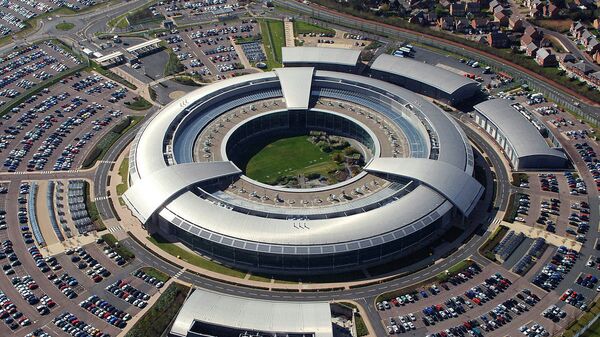A new book called "Behind the Enigma", which claims to be the first 'official history of Britain's cyber spy agency GCHQ reports a lack of trust between British and American intelligence organisations around the time of the Falklands War in 1982.
According to the book, GCHQ, under pressure from Britain’s Ministry of Defence (MoD), withheld intelligence about British military deployments against Argentina from the US National Security Agency (NSA) during the war, fearing that the US State Department would use the information to further its influence in Latin America.
“MoD was afraid that if you gave the Americans anything, given the normal leaky nature of [Washington] DC that it would end up going to somebody in State who would then provide it to the Argentines,” the author of the book Professor John Ferris told the Daily Telegraph.
Intelligence reports supplied by GCHQ during the conflict included the information that Argentinian commanders had ordered an attack on the British naval task force sailing to the South Atlantic – a decision which in turn led to a key and controversial moment of the conflict when a British submarine sank the Argentinian battleship, the General Belgrano.
The sinking of the Belgrano changed the course of the 1982 war, confining the Argentinian navy to port for the remainder of the conflict.
Ferris, believes that the intelligence supplied during the 1982 conflict was comparable in military value to the so-called Ultra material supplied by GCHQ’s predecessor organisation after it broke German codes during the Second World War.
He said: “The British knew what the Argentine order of battle was, what it was planning to do.”
The book examines the history of Britain’s codebreakers from the First World War to the present day, highlighting the successes and failures of the agency.
Personality Clash?
It also highlights tensions between senior officers in GCHQ and their counterparts in the NSA, particularly during the 1980s, noting in particular a former NSA Director's negative description of the head of GCHQ.
William Odom, Director of the NSA from 1985 to 1988, wrote in a diary entry that Peter Marychurch, the head of GCHQ, was a "tense, nervous, slightly insecure civil servant”.
‘He and his immediate subordinates hold, in my view, a vastly inflated view of their own competence and talents,’ the diary continued.
‘Socially I no longer find the British amusing, merely a pain in the ass...They didn’t have a good grasp either of current strategic affairs or history. They are semi- educated newspaper readers, not analysts worthy of national level posts.’
The book’s author said the diary note was “very specific and quite unusual”.
The two spies seem to have made up by 1986, however, when Marychurch presented Odom a piece of a Colossus Mark II, the world’s first programmable electronic computer, developed at UK codebreaking centre Bletchley Park, to exhibit at the National Cryptologic Museum in Fort Meade, Maryland.
Cyber Spies in the Internet Age
The author suggests GCHQ in the 1990s grasped the potential of the internet much faster than the NSA.
He said the UK spy agency “transformed itself and fundamentally changed the way its people operate”.
Ferris says that GCHQ is currently using its public-facing arm, the National Cyber Security Centre, to get very sensitive information into the hands of the public.
Some secrets look set to stay secret
While GCHQ ended up giving Ferris “more material than they promised”, other intelligence agencies – in the US, Canada and Britain – were entitled to be informed of material being written about them by an allied organisation and, if necessary, could request they were not mentioned or have excerpts removed.
“That took a long time to negotiate. A fair amount of what I wrote was removed,” Ferris told the Shropshire Star.
Ferris, who was forced to sign the official secrets act in order to gain access to GCHQ files, believes that around 5 percent of his work was removed from the book, but the main story has still been told.





